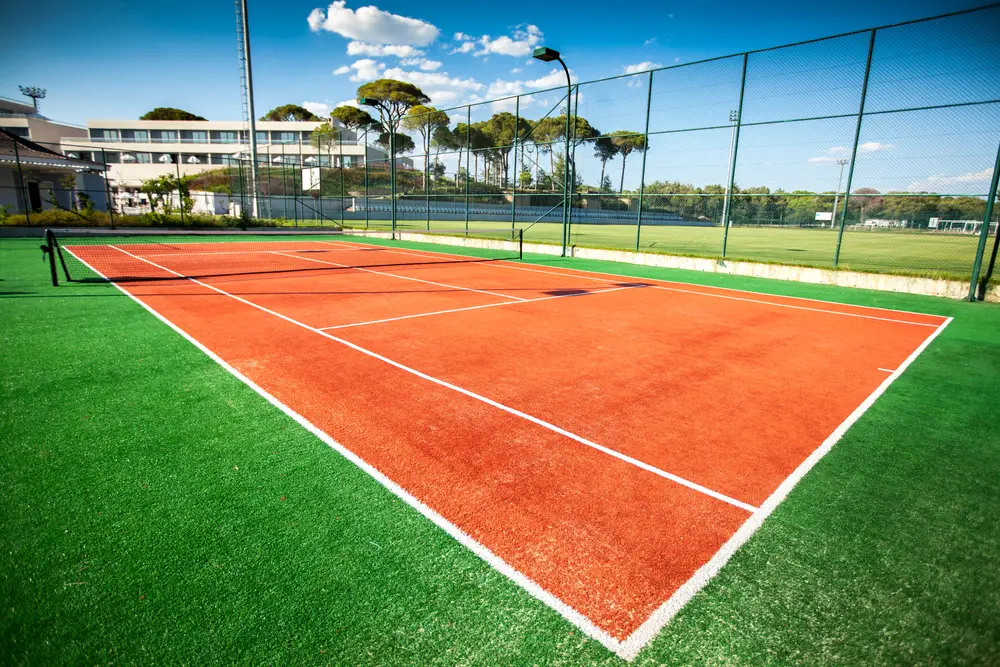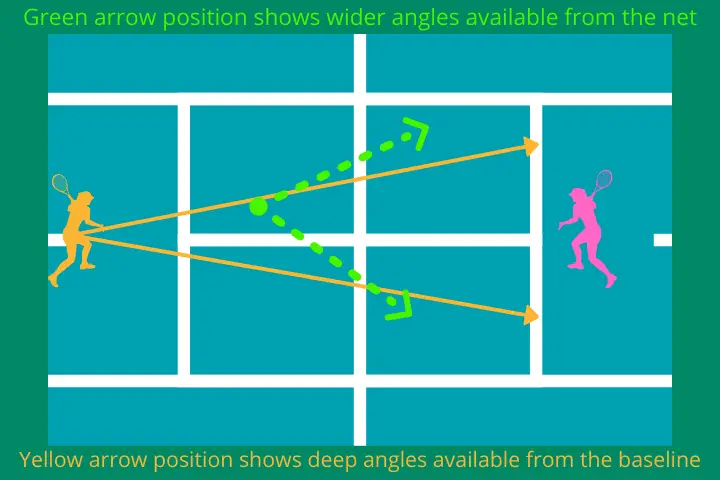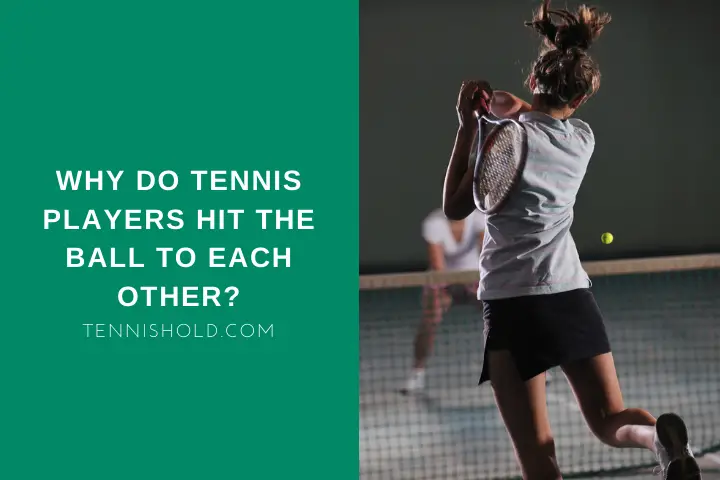Have you ever wondered why tennis players hit the ball at each other? At first glance, it may seem counterproductive to hit the ball to your opponent, but there are many good reasons to do so.
In the 2020 US open men’s singles final, there were 322 points played. Of these points, 120 were won from unforced errors. This means almost 40% of points played at the final of one of the most elite tournaments in the world were won on mistakes.
If these are the stats at the highest level of the sport, imagine what it is at the amateur level.
Tennis players hit the ball to each other to put pressure on the opponent and make them miss. They also do this to build up the rally to set up for a finishing shot. More points in tennis are won on errors than clean winners.
This trend has been present for many years and looks set to continue, both at the professional and amateur levels.
In this article I will be covering:
- Why deep cross court shots are a safe choice
- Triggering the opponent to make the error
- Waiting for the opportunity to strike
- Why hitting down the line carries more risk
If you’re a stats junkie, you are going to enjoy this article!
The Deep Diagonal Shots Are Safer Due To Extra Distance

The top reason for hitting cross-court is consistency due to distance. The direct distance from one baseline to the other is 78 feet (23.77 meters).
But what happens if you measure the court from the corners?
In singles, measuring from corner to corner adds an extra 4.5 feet (1.37 meters). This represents an increase of over 5%. In doubles, it is even more. The distance from the corner of the tramlines adds an extra 8 feet (2.44 meters), which is an increase of almost 10.3%.
As the hitting zone is longer, the margin for error is also larger. A shot that lands in cross-court may have gone out had it been hit down the line.
Another consideration is the net height. The net must measure 3 feet (0.914 meters) at the center. The net is secured in the middle by a tight band. The band holds the net height steady at the center, but the net will be higher further away from the middle.
If you are hitting the cross-court, there is more room for error in terms of height. The ball will be traveling over the middle of the net, and thus the net clearance required is less.
The final element is direction. It is much easier to send the ball back the way it came. It is easier to make clean contact when the racket is moving in the same direction as the incoming ball.
Managing Opponent’s Unforced Errors

You will often hear commentators say that one player lost a match rather than the victor winning. This figure of speech is used to describe a match in which the defeated player lost due to their own errors, not the winner’s skill.
If you are a consistent player, a popular tactic is to trade cross-court. The idea behind this is that for the opponent to control the rally, they will need to pull off a high-risk shot.
Suppose your opponent is more consistent than you. In that case, you can generally assume that the longer the rally, the greater the chance of them winning the point. You will then want to do something to counter that.
If I am stuck in a cross-court rally with someone more consistent than me, I will need to hit down the line to change the dynamics and get back on even terms.
The problem, of course, is that hitting down the line is a harder shot. The distance is shorter, the net is higher, and I am having to change direction.
A consistent player locking their opponent in a cross court-rally is an excellent example of someone playing to their strengths. By doing this, they are trying to make their opponent miss rather than hitting a clean winner.
Awaiting For The Right Opportunity
Another reason players hit the ball to each other is because they are waiting for the chance to attack.
If I am in a long rally up the middle and my opponent drops the ball short, I know I have an opportunity to strike. The short ball they have hit now allows me to hit to a more extreme angle.
That angle wouldn’t necessarily have been created had I gone on the offensive immediately.

Once I have gotten the angle to hit to the balance of power shifts in my favor. Crucially I have taken time away from my opponent, and they must react even faster.
This tactic works so well for consistent players because the opponent will often make an error before the chance to strike even arises. The attacking moment is just there as a security net if they don’t make an error first.
Remember that 40% unforced error figure from the 2020 US open men’s final?
The women’s final was not much better with unforced errors making up just under 30% of the points.
Down The Line Shots Are Riskier

Hitting down the line is, for the majority, more challenging than playing cross-court. The main reason is that you have to change the ball’s direction.
When hitting the cross-court, your racket swings in the same direction as the incoming ball. When hitting down the line, the ball is coming diagonally, but you will be swinging your racket differently.
You also need more net clearance as the net is higher further from the center.
Don’t forget that when measuring a singles court corner to corner, the distance is over 5% more than baseline to baseline. If you hit a shot down the line and it was only slightly out, would it have gone in had it been hit cross-court?
That 5% less hitting space could be the difference between the ball going in or out.
Tennis is very simply a game of consistency. Put the ball in one more time than the opponent, and you win the point.
Also read: Is There Any Difference Between Men’s And Women’s Tennis Racket?
Final Words
Even though the science is clear that it is a higher risk of hitting down the line, many people have a tendency to do it more often than they should.
I am myself one of them. I love the intense feeling of pulling off a beautiful down-the-line finish and often can’t resist the urge.
Do you have a habit of hitting down the line at the wrong times? Perhaps you regularly hit the ball to your opponent, trying to create the opportunity but end up on the losing end.
Which of these situations do you struggle more with, and what do you do to cope?

